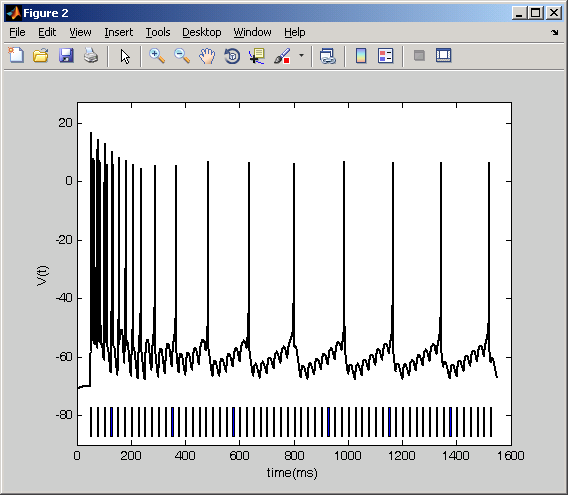This is the readme for the matlab code associated with the paper:
Stefanescu RA, Shivakeshavan RG, Khargonekar PP, Talathi SS (2013)
Computational Modeling of Channelrhodopsin-2 Photocurrent
Characteristics in Relation to Neural Signaling. Bull Math Biol
All the codes have introductory explanations that could be accessed
with the command "help" in Matlab
The folders contain the following codes:
ChR2 contains two subfolders: FitChR2_4StateModel and ChR2_3StateModel
FitChr2_4StateModel folder contains all the codes necessary to employ
search & optimization algorithms to find the best 4-state parameters
to fit the empirical profile; it also provides examples of comparison
between the empirical profile and the photocurrent evaluated with the
4-state model (differential equations) for the best parameters we have
found for ChRwt and ChETA modeled based on the experimental data
provided by Gunaydin et al. 2010
ChR2_3StateModel comprises the coded to generate the response to
optostimulation of 1s and 2 ms starting from ideal initial conditions
(IIC) and special initial conditions (SIC); Nicolic3stateGr_2stimuli.m
is investigating the recovery of ChR2 by evaluating the photocurrent
in response to two consective stimuli of 1s each; the code could be
easily modified to generate the recovery curve for ChR2
The WB folder contains codes used to address the response of an
interneuron (with dynamics given by Wang-Buszaki neuron model)
expressing ChRwt or ChETA to various optostimulation protocols when
either the 3-state or the 4-state model is accounting for ChR2
kinetics
The Gol folder contains codes used to address the response of a
pyramidal neuron (with dynamics given by Golomb neuron model)
expressing ChRwt or ChR ET/TC to various optostimulation protocols
when either the 3-state or the 4-state model is accounting for ChR2
kinetics. Typing Golumb_regular4st in the matlab prompt produces
an image similar to Fig. 7A in the paper:
 The folder ThSol contains the code employed to evaluate the
semi-analythical solution for the 4-state model in Light On condition;
the Light Off solution provided by Nikolic et al. 2009 is also
evaluated
The folder ThSol contains the code employed to evaluate the
semi-analythical solution for the 4-state model in Light On condition;
the Light Off solution provided by Nikolic et al. 2009 is also
evaluated
 The folder ThSol contains the code employed to evaluate the
semi-analythical solution for the 4-state model in Light On condition;
the Light Off solution provided by Nikolic et al. 2009 is also
evaluated
The folder ThSol contains the code employed to evaluate the
semi-analythical solution for the 4-state model in Light On condition;
the Light Off solution provided by Nikolic et al. 2009 is also
evaluated
The folder ThSol contains the code employed to evaluate the semi-analythical solution for the 4-state model in Light On condition; the Light Off solution provided by Nikolic et al. 2009 is also evaluated